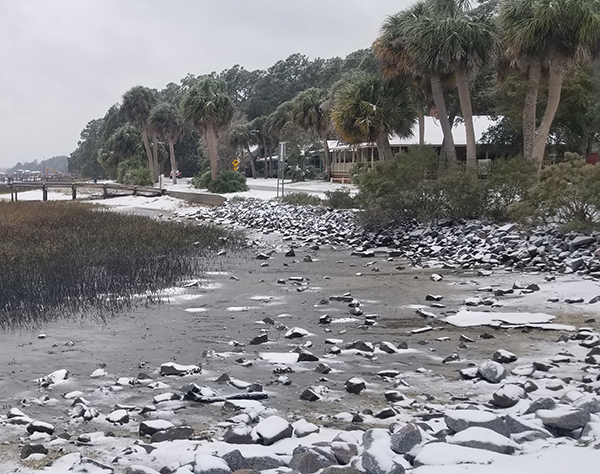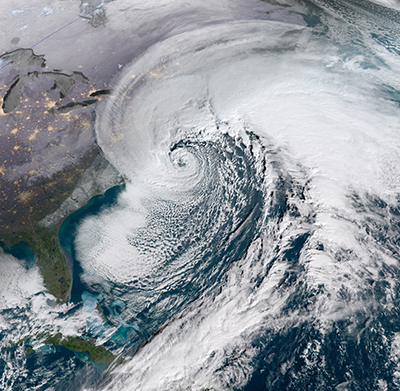The first time I saw snow was in December of 1989.

Four-wheelers pulled tubes and hydro-slides attached to ski ropes. Thrilled teens sailed through three inches of snow covering dirt roads. It melted quickly and effortlessly.
This time, I’m 43 and own a house with the potential for bursting pipes, heavy snow-laden oak limbs overhead and a car with no garage. It was not as fun as I remembered, and it lasted a week!
The Weather Channel called it Winter Storm Grayson, named for effect. Meteorologists called it a “bomb cyclone” and “weather bomb,” using the term “bombogenesis.” I call it “the second time I have ever seen snow and hopefully the last!”

and Atmospheric Administration
Call it whatever you want.
The January 2018 East Coast winter storm resulted from the collision of a low-pressure cyclone drawing cold air from the Arctic into the Lower 48, where it met warmer air hovering over the Gulf Stream. Such a “difference of opinion” or tight temperature gradient caused a sudden drop in atmospheric pressure. If the pressure drops 24 millibars in 24 hours, it is considered “bombogenesis,” creating an angry storm spinning counterclockwise and wreaking havoc on anything in its path.
It looks like a hurricane on the radar, but it forms in a completely different way—and much closer to land. Due to the fact that it strengthens so fast, the result is harsher weather conditions in a shorter period of time. It is usually followed by a polar vortex, with Arctic air escaping from the North Pole.
Some scientists believe that the Jet Stream, the air current that separates Arctic air from moderate and tropical temperatures, is becoming unstable. It is strong when temperatures on either side are very dissimilar, but as they start to equalize due to warming of the polar ice caps, the Jet Stream is weaker, resulting in intense weather patterns. Other scientists say that these storms help to redistribute pockets of heat and cold more evenly around the globe.
Things seem to be bombing more often.
In recent years, we have experienced average rainfall amounts, but they are “rain bombs,” a large amount of rainfall in a short amount of time with longer intervals between storms.
“Don’t confuse weather—which is a few days or weeks in one region— with climate, which is years and decades and global,” said Jason Furtado, a University of Oklahoma meteorology professor. “Weather is like a person’s mood, which changes frequently. Climate is like someone’s personality, which is more long-term.” Yet, your mood can be a reflection of your personality. Our planet is dynamic. We cannot expect it to stay the same when we are changing the landscape so rapidly.
According to global temperature data, the 10 hottest summers on record, in order, with 2016 being the warmest, are:
- 2007
- 1998
- 2009
- 2013
- 2005
- 2010
- 2014
- 2017
- 2015
- 2016
Sea level rise resulting from melting ice caps cannot be ignored. Coastal communities will be forced to renourish beaches more often and build up low-lying urban areas. Storms will be larger and more intense.
Being informed about the subject is the least we can do.
Participate in environmentally sustainable programs. Reduce waste in landfills by recycling. I think of small efforts as taking a little load off a planet. Every little bit counts.
Storm Wrap Up:
Reports of iguanas falling from trees and sea turtles washing up cold-stunned in the Gulf were not encouraging. However, only one sea turtle (“Snow” is recovering at the SC Aquarium Sea Turtle Care Center) and one manatee succumbed to cold water temperatures dipping to 38 degrees in Beaufort County. Several spotted sea trout died due to the extended cold snap. I presume that many crustaceans also suffered significantly. On the plus side, palmetto bugs took a hit.
By Amber Hester Kuehn, owner of Spartina Marine Education Charters



